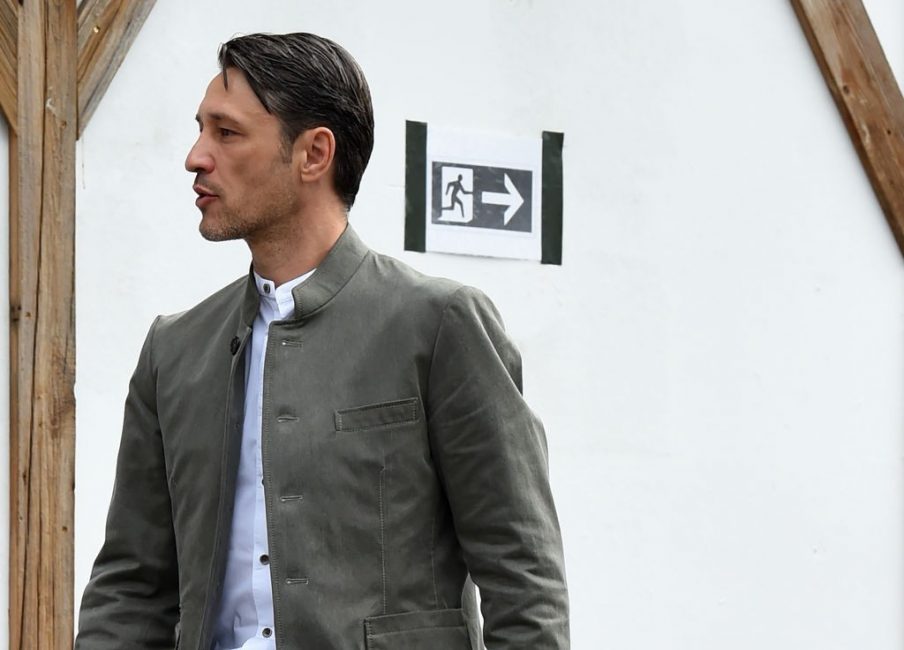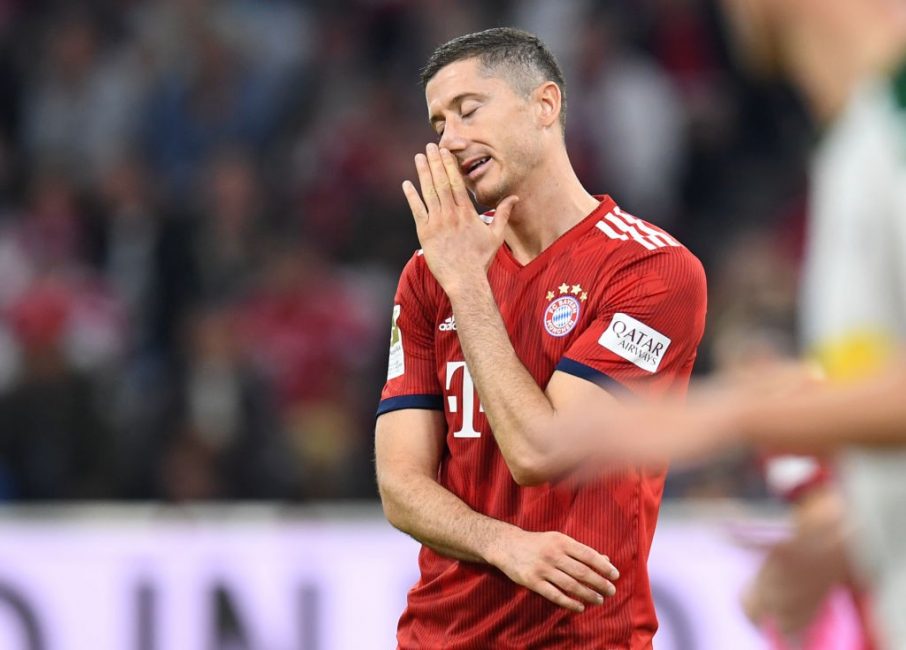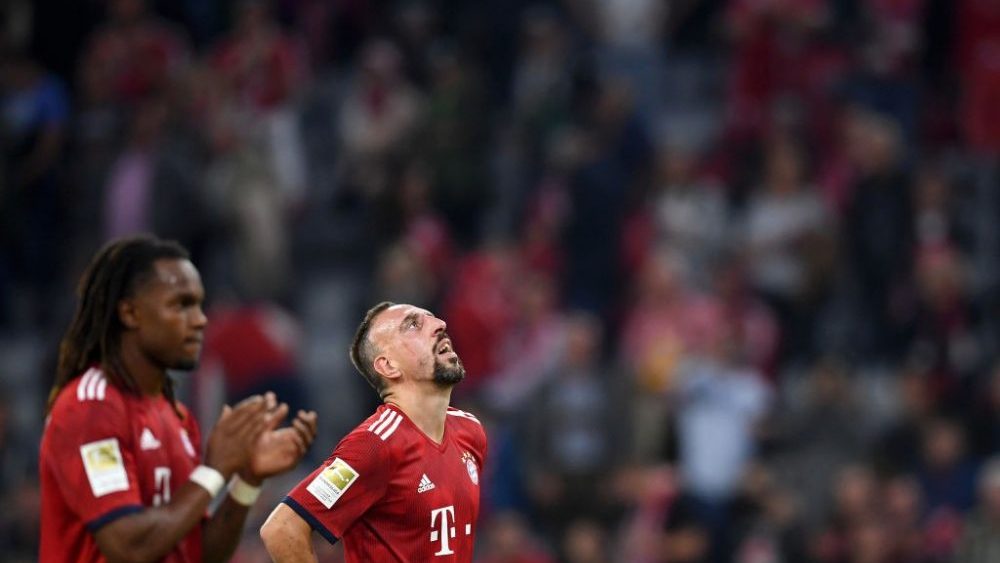Big Crisis, Big Analysis
The Situation
After four consecutive games without a win against Augsburg, Hertha, Ajax and Mönchengladbach, including three home games, it is impossible to really deny that there is a crisis. Two points and a goal ratio of 2:7 are the poor yield from four games, which should have been won according to the club’s self-image and based on the results of the past few seasons. A slip here and there, a bit of bad luck in front of goal or with referee decisions, these things can happen and have been unwelcome factors in previous years of total dominance that led to dropped points in the odd game. However, when you have four disappointing results in a row, it is advisable not to attribute this exclusively to a lack of luck in the game, but to investigate the causes a little more precisely.
From the first nine matches (7x Bundesliga & 2x CL) FCB gained 17 points. This corresponds to an average of 1.8 points per game, which, extrapolated to a Bundesliga season, would result in about 64 points at the end. A score that has only been enough to claim the Bundesliga title in the 2000/01 season. 17 points from nine games is a long way from the fabulous numbers that were produced under Guardiola (25/23/27 points) or Heynckes (24 points each) and is the exact same yield that the duo Ancelotti/Sagnol had last season at the time of their dismissal.
No reason to panic?
It seems crazy, therefore, when Uli Hoeneß expresses his lack of understanding about the scaremongering after the defeat against Gladbach, as his club is “only 4 points” away from the table leader Borussia Dortmund. Given that the return of Jupp Heynckes was conducted when the Reds were only 5 points behind last season, a decisive threshold seems to lie between 4 and 5 points behind, which has remained hidden from some observers at least until now. In addition, Hoeneß’s statement reveals a strangely defensive attitude towards a six-time serial champion who, not so long ago, seemed to have been the league’s eternal winner.
Four points is not an impossible task to overcome and the 2009/10 season showed just that. One can even become champions with as little as 15 points from the first 9 games and advance to the Champions League final. The difference is in that season the team simply needed time to come to terms with the culture shock initiated by van Gaal and to find its way from an overly schematic and unconvincing execution of the positional game to a more intuitive way of playing.
Will Kovac remain the coach?
The reason for the emphasis on calmness might be that Hoeneß declared Niko Kovac his personal candidate of choice and ostentatiously preferred him to all the other coaches who seemed to be in the draw. It wasn’t that long ago that Hoeneß complacently declared himself triumphant, “the wise man desired” and God forbid any “Tuchel talk”. An early failure of Kovac would thus also be an admission on his part that he had been wrong and would call his expertise into question.

(Photo: CHRISTOF STACHE / AFP / Getty Images)
More likely than Kovac’s dismissal, therefore, is that the transfer market will be used to replenish the team on the pretext of “unpredictable” injury, especially as the number of coaches available is extremely limited at the moment. Most likely, the purse strings will be loosened a bit more for suitable players than if the club showed a bit more foresight in the summer. Additionally, the very talents that the club intended to nurture will be obstructed on the way to regular playing minutes. A transfer corresponding to Uli Hoeneß’s understanding of football would be, for example, the signing of an alpha male or aggressive leader in the tradition of a Jan Wouters or van Bommel for central midfield, whereby one could at the same time finally close the book on Renato Sanches and deprive Thiago of his strongest position.
Problems in central midfield
At the same time, it is certainly not wrong to pinpoint the problem in central midfield. In the absence of the perfect midfielder that combines defensive stability & offensive creativity, Kovac has yet to find the ideal combination of player types for the three central positions: When he first looked at the team with the perspective of a recently successful coach against Bayern, he tried to create additional stability and better counter-attacking-protection with Javi Martínez. Learning from the resulting problems in the game structure and the lack of creativity, Kovac moved Thiago to the six and in his tried and tested Hitzfeld strategy, resorted to the safety option of Javí Martinez in the Champions League.
There have been eight different midfield combinations in the nine matches since the first Bundesliga match day, and Kovac has been criticized for this rotation, though possibly wrongly. On the one hand, there is no need for a discussion about the fundamental necessity of rotation at a club represented in three competitions, which furthermore consists almost exclusively of national players; be it for reasons of load control, be it for reasons of squad satisfaction or for general playing practice. On the other hand, the composition of the midfield was the last remaining element of surprise for an otherwise completely predictable team.
Missing collective behavior
The chain of four in front of Neuer, consisting of Alaba, Kimmich and 2 (of 3) central defenders, on the wings Ribéry & Robben (occasionally Gnabry) and Lewandowski up front. These eight players always provide the same framework for a central midfield that is not only subject to constant change from game to game in terms of its personnel, but is also different in its playing style due to the different types of players. In a league that, despite only two matches a year, has developed a fetish for adapting to Bayern’s way of playing and developing a counter-concept (from throwing two and maybe even three defenders at Ribéry to the shifting of the chains, when Robben was added as a complementary wing player, to the abandonment of the desire for possession of the ball and the league-wide, extreme focus on the transition game in response to Guardiola), this variance should not be seen as a shortcoming. Especially since injuries, barriers or necessary rotation make it questionable whether a possible ideal combination could actually be resorted to constantly.
What is missing so far and where Kovac has not yet been able to achieve any notable success is an adaptation of the “fixed frame” of the eight other players to the respective midfield trio: no matter in which combination this trio was playing in, the remaining eight always played almost congruently down their usual boots. It is obvious that the other players also have different requirements to meet, depending on whether the offensive center consists of James & Müller or Renato Sanches & Goretzka, for example. In principle, the greatest shortcomings so far seem to exist in collective behavior: While opponents such as Hertha & Mönchengladbach have internalized moves and were able to play passes in confidence on rehearsed routes at high speed on suspicion, FC Bayern’s only recurring pattern seems to be the overlapping of the full-backs.
Missing goal danger
It is not uncommon for this overlapping to lead to a cross from the touchline. Against Hertha BSC, for example, this was achieved with a frequency and effortlessness that could not have been achieved in previous years. However, none of the crosses led to a successful goal. While Hertha & Mönchengladbach in particular were able to profit from merciless effectiveness, the ratio of expenditure to yield at the FCB is downright ridiculous. Bad luck and weakness in the final evaluation alone do not provide a sufficient explanation for this, but rather a combination of a lack of dynamism and inadequate occupation of the penalty area.
In a mixture of their own dominance and willing abandonment of the midfield by the opponent, the team often stands so far up in the opponent’s penalty area that there is simply no room for dynamic runs. Only the full-backs are able to act with space and speed by means of the mentioned overlapping. Not infrequently, both Lewandowski & Co. and the opponent’s central defence observe in peace of mind whether Ribèry/Alaba or Robben/Kimmich will succeed in bringing about a cross into the penalty area. On the one hand the attackers lack the dynamics, on the other hand the opponent’s defence has enough time to position itself ideally in the penalty area and to profit from its already existing numerical superiority there. Since Tolisso’s injury at the latest, a midfielder has been missing who seeks his way from the depths to the front and thus causes a bit of unrest, as a Ballack or Schweinsteiger had perfected in the past.

(Photo: Christof STACHE / AFP)
Not only is the centre very static, but its positioning is also far too inadequate to allow high crosses from the outside or from the midfield to fail from the outset. In a mixture of cleverness and resignation, Lewandowski increasingly refrains from even entering a duel for the cross on the front post and prefers to lurk in the background for the second ball. Müller, too, is more of an opportunist than a real target, not to mention the other midfielders. As a result, the actual centre is often almost unoccupied, the outside players remain in the centre in the event of a successful combination without a first goal and play the ball away from the goal into the back area. In principle a good variation, but it is relatively easy to defend due to the aforementioned static tendencies, especially when there is almost no alternative but to use it.
Good counter-pressing, bad counter-pressing
There is also a lack of collective movements in the defense. One of Niko Kovac’s clearest priorities so far has been to intensify the counter-pressing that had started in the years of Guardiola. In some cases, this has already been achieved remarkably well, but the basis of this success seems to be primarily an increased individual commitment instead of an internalized group tactic. If all the players are equally busy chasing the lost ball, it is obvious that the potential of recent years is by no means lost. But all too often, counter-pressing is pursued in far too wide a range of individual forms with different risk appetites. For example, a Thiago as a six often shifts out in old “bee swarm tactics” with enormous risk and seeks an early ball conquest far away from his own goal. However, if no one then moves up as well or the back four even falls back as a precaution, there is often a gigantic gap in the center, which even technically inexperienced opponents can effortlessly fill with initial counter passes.
In general, you can feel that Thiago is now the last remaining central midfielder who still has the main features of the positional game and knows how to take them to heart. Apart from him, there are only Thomas Müller and Javí Martinez left, who have passed through the meticulous school of van Gaal and/or Guardiola. This is largely unknown to all others, whether Goretzka, Renato Sanches or James. They all play their position largely to their own liking, at any rate schematic or rehearsed sequences are rarely to be observed. On the contrary, the prevailing impression is that the other players themselves usually do not know what their teammates intend to do with the ball on their feet and, without the ball, enter into a passive observer position: this results in bad passes due to misunderstood or uninitiated running paths.
Missing quality?
No other player has the impression that a refresher of the collective processes is necessary like Thomas Müller. Engaged as ever, he errs in the middle of the field and acts as unlucky as seldom before. In this form he does not in itself represent an option for the central midfield. At the same time, however, it becomes clear that the criticism of the players that their lack of commitment and will is to blame for the misery is a fallacy. But without a clue as to where to run, no matter how determined and committed a run may be, it is pointless.
It doesn’t help anything that Kovac demands more directness in the actions. Sure, it seems pointless to try out combinations in the many-legged penalty area that is occupied by the opposing majority that are already failing in the midfield. But these attempts are less an expression of playfulness and a possible tendency to flourish than desperate attempts to find a playful solution against a compact defensive. In the absence of rehearsed moves, this sometimes leads to crazy bold, improvised combinations in a confined space, which regularly fail, but nevertheless show what gifted footballers actually stand on the pitch.
One thing should not be forgotten: no other Bundesliga club is even close to being confronted with the problems that Bayern’s professionals face in this extreme form. It is therefore a misconception to attribute the lack of creativity and punch on the one hand and defensive susceptibility on the other to a lack of individual class or to assume that the players who are currently successful in other Bundesliga clubs would effortlessly do better than the Bayern players. They lack neither the basic class nor the basic will to play, but there is a lack of a guiding hand to show them possible solutions in recurring situations, in order to not have to dissolve static circulation by unimaginative crosses or hopeless dribblings, but to be able to generate dynamism.
Can Kovac fix it?
Other coaches have shown that this is possible, and it is now up to Kovac to address this problem. You can be skeptical, but for Niko Kovac it is probably the greatest opportunity of his life to make the leap into the absolute coaching elite. He has Peter Hermann at his side and should make the most of his immense wealth of experience. In addition, he now has the unintentional opportunity to address the team in an appropriate manner and conjure up exactly the us against the world mentality that Uli Hoeneß obviously loves and longed for so much.
If team leadership is indeed one of Niko Kovac’s great strengths, then it should be easy for him to bring the team in and let them pull together. Not only do the players seem highly insecure at the moment, but they also have to deal individually with a level of criticism and headwind they are unfamiliar with. Perhaps the current misery and the sudden change of status to the pursuer in the race for the championship can not only spark a stronger cohesion, but also a fire, which the Bundesliga has not been able to offer the successful series champion for a long time. It would be desirable.




 October 9, 2018
October 9, 2018 





It’s very clear now that Uli or Rummenigge are not fit enough to run this club . Anyway ,I hav been saying this for 2 years straight now . It’s just the beginning of an end Bayern is heading towards . Uli n Rummenigge would hav turned this club into another AC Milan already ( if there were another big club in Bundesliga , but as long as there aren’t any uli can celebrate , and keep filling his offshore accounts .